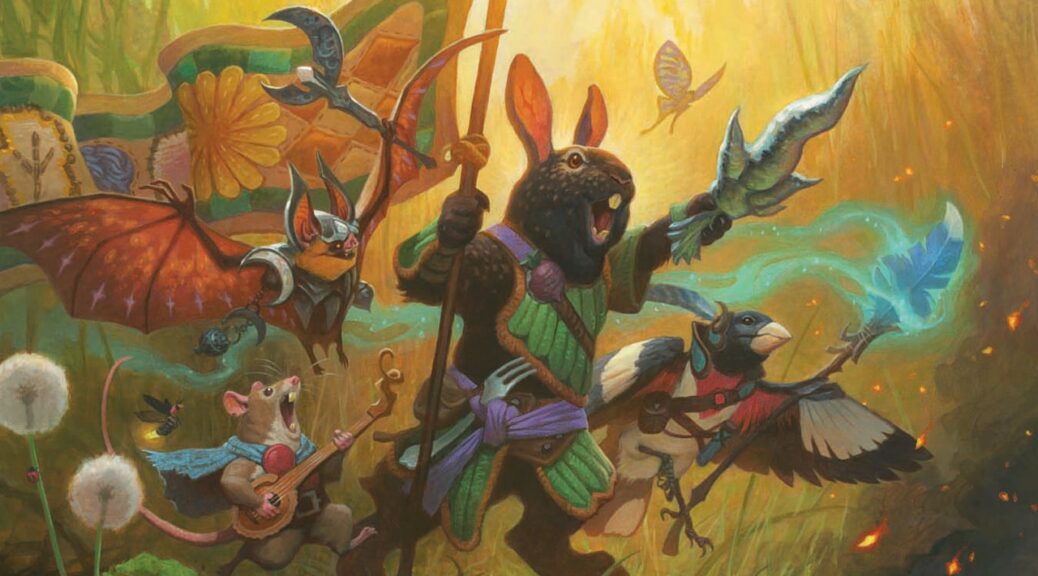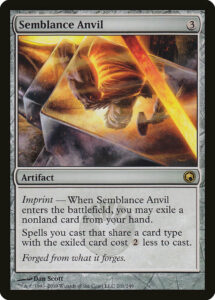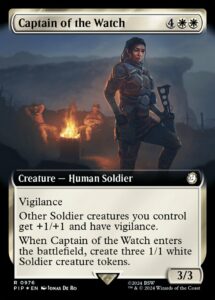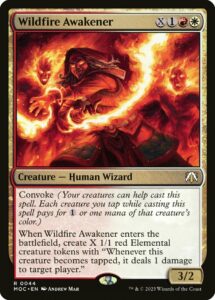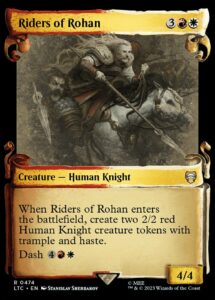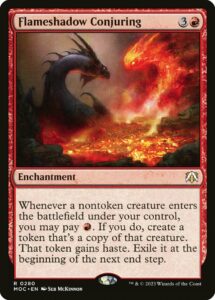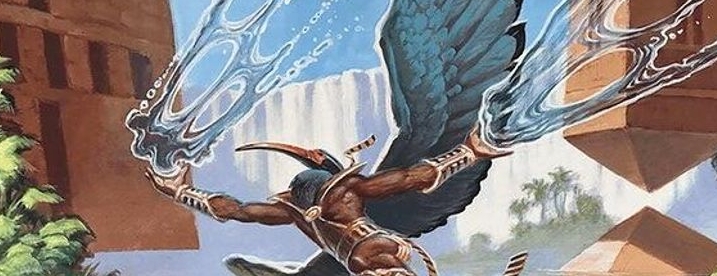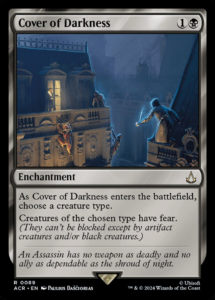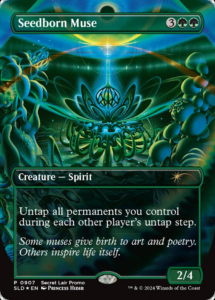Bloomburrow has a prerelease in two weeks, and the previews are flowing freely. Often I’ll take a look at all the mythics, but the big price driver is Commander.
This is the first one that made me stop and think that there was a lot of good stuff coming. Birds are already blue-white, adding red doesn’t do much, but this is token greatness.
To be fair, we don’t know what’s in Zinnia’s deck yet, so there’s some significant reprint risk. Please keep that in mind. If you want to wait on buying these until the decklist is revealed, please feel free to be cautious.
Step 1: Make our creature spells cheaper so the Offspring is free or reduced. Cost reductions can apply to additional costs, so if we get something for 2 less, the Offspring just tags along!
Conduit of Ruin (BFZ nonfoil $11) – The Eldrazi have made this go through the roof, but it does exactly what we want in a deck like this. Offspring is free if it’s in play, and if you happened to make a token, then yes, it’s four less! Feel free to fetch up a Myr Battlesphere with it.
Medallions (Borderless foil from $7 to $20) – I am a huge proponent of this set of mana rocks, and frankly, I think they are underplayed. You can play more than one color, and it’ll reduce multicolor spells by that much mana.
Seal of the Guildpact (Retro frame foil is bulk) – A lot of what you’re going to be doing is multicolor, and while it’s five mana, it does what you want.
Grand Arbiter Augustin IV (SL Fallout foil $5) – People kill this blatherer on sight, because it’s annoying, but when a card is good, it gets targeted.
Monuments ($3 to $9) – Especially Oketra’s Monument, as it gets you more tokens for more goodness.
Semblance Anvil (Retro Schematic foil $2) – It’s two cards, yes, but you’re going to be doing a lot of things to make up for the disadvantage.
Urza’s Incubator (MH3 foil $10) – The regular frame foil is half the price of every other version, and with the coming emphasis on kindred decks, it’s a good a time as any to stock up.
Urza’s Filter (INV nonfoil $4) – If you’re casting and copying multicolor spells, this is your new best friend.
Step 2: The most fun things to copy are tokens that come with tokens. You’re going to be spoiled for choices, but if you want a full army to come from one creature, these are the frontrunners.
Captain of the Watch (surge foil $1.50) – A time-honored choice, as the original and the Offspring will boost the resulting army, giving you six 3/3s and a 2/2 token.
Geist-Honored Monk (INN foil $2) – You’re likely to go wide with a deck like this, so why not grab two 6/6 Monks that can get a lot bigger and four flyers?
Regal Caracal (AKH foil $5) – Amusingly, there’s not a lot of Cats or Dogs on Bloomburrow, so this is likely safe. Again, a lot of boosting each other going on here and a whole lot of lifelink too.
Wildfire Awakener (EA 50¢) – The card is fantastic as the first thing to cast or if you already have a boatload of tokens. If you’ve got haste enabled, watch out!
Riders of Rohan (Showcase Scroll foil $1) – The Dash ability is really sick here, if expensive. You will not have to return the Offspring (I think) but you’re going to get four hasty tokens each time.
Precursor Golem (bulk) – Too many printings and frames, and with some real risk, but it’s one card for seven 3/3 and one 1/1 Golems!
Step 3: Hyperdrive!
Purphoros, God of the Forge (etched foil $20) – There’s a reason that everyone with tokens plays this, and it’s because it saves you an attack step, just dealing damage directly.
Flameshadow Conjuring (Magic Origins foil $7) – If 2 is good as an Offspring cost, then 2R to get double offspring is even better! It’s absolutely overkill, and you shouldn’t stop yourself from living the big dreams.
Warleader’s Call (Showcase foil $10) – The other versions are cheaper, but the card is very popular and very powerful.
Serra Redeemer (Foil EA $4) – Most of the 1/1 boosters are touching green, but if you want to make a lot of tokens become a lot bigger, this is a great place to start. And yes, if you Offspring this you’ll get double the counters. (The Offspring will even get a boost from the original!)
Optional: Artifact Creature builds of this Commander are going to kick a lot of butt. These colors have a lot of ways to pay you off for doing what you’d do anyway, just adding artifact synergies.
Artifact reducers (too dang many to list) – The really great thing about a Zinnia build of artifacts is the way that you can make Offspring of Etherium Sculptor and the like, going just wild on the reductions and the benefits.
Simulacrum Synthesizer (BIG foil $28) – This especially needs mentioning because the Offspring tokens have the mana cost of the original, so if you Offspring something like a Solemn Simulacrum, you can get two Constructs to go with the two originals! I can’t wait to see how people break this card.
Cliff (@WordOfCommander at Twitter and BlueSky) has been writing for MTGPrice since 2013, and is an eager Commander player, Draft enthusiast, and Cube fanatic. A high school science teacher by day, he’s also the co-host of the MTG Fast Finance podcast. If you’re ever at an event and you see a giant flashing ‘CUBE DRAFT’ sign, go over, say hi, and be ready to draft.
